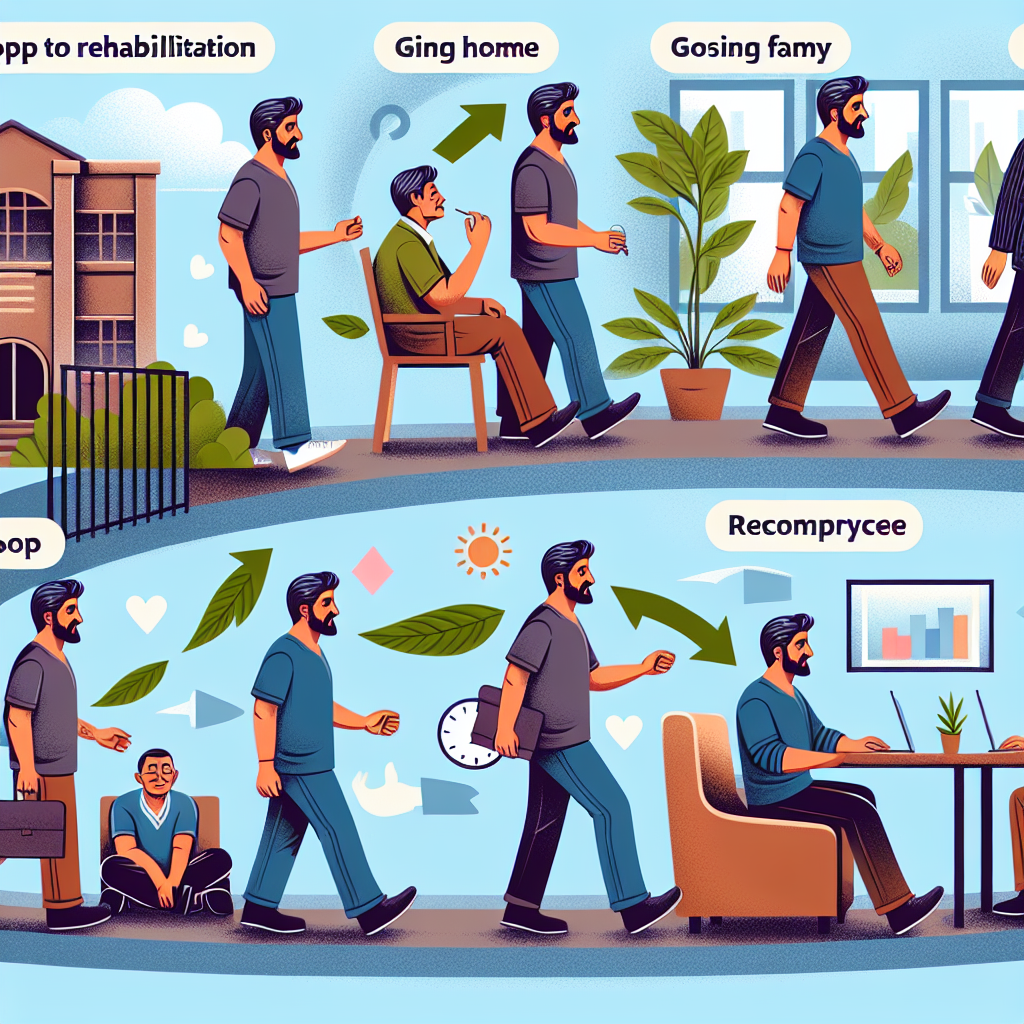The Quiet Ways Families Accidentally Feed Addiction
Enabling is one of the most misunderstood parts of addiction. People imagine enabling as something obvious, handing someone cash to buy drugs or turning a blind eye to reckless behaviour. But the reality is far more subtle and far more painful. Most families don’t enable because they’re careless or naïve. They enable because they love someone who’s falling apart, and they’re desperate to keep the situation from getting worse. They enable because they’re terrified of losing the person entirely. They enable because the alternative feels too brutal to live with.
Families often believe they’re helping when they’re actually keeping the addiction alive. This isn’t because they’re wrong or weak, it’s because addiction warps the entire emotional landscape of the household. Addiction doesn’t just control the person using, it influences the people around them, pulling everyone into its gravity. What looks like compassion can become the fuel that drives the next relapse. What feels like protection becomes a shield that prevents accountability. Most families are shocked to discover that their attempts to help have been absorbed into the addiction itself. And that shock is exactly where real recovery often begins.
The Difference Between Support and Enabling
Support is what helps someone move forward. Enabling is what keeps them stuck. The challenge is that both behaviours look similar from the outside, and in the moment, they feel almost identical. Giving someone money can be support if it pays for treatment. It’s enabling if it pays for the next drinking binge. Letting someone stay in your home can be compassionate if it’s part of a structured recovery plan. It’s enabling if it allows them to keep using in comfort.
The line between support and enabling is thin because addiction thrives in emotional grey areas. Families want peace in the home. They want the chaos to pause, even briefly. They choose the option that causes the least immediate pain, not realising that the short-term decision often creates long-term damage. Support requires boundaries, structure, and sometimes uncomfortable decisions. Enabling requires none of these. It simply requires fear, fear of confrontation, fear of consequences, fear of things getting worse before they get better.
‘Lending Money’ vs Funding Destruction
Almost every family caught in addiction has a story about money. Someone borrowed money for petrol, for rent, for groceries, for school fees, for transport, for “just this once.” And because families love, they give. They want to believe the excuses, not because they’re gullible, but because believing the excuse feels easier than confronting the truth. Lending money to someone in active addiction is often the fastest route to enabling. It gives the illusion of stability, “At least they won’t get evicted,” “At least the car won’t be repossessed,” “At least the children won’t go hungry.” But addiction always finds a way to turn financial support into breathing room for more using.
Families tell themselves they’re helping. In reality, they’re taking on responsibilities the addicted person avoids. Addiction thrives when it doesn’t face consequences. Financial rescue becomes a cushion for continued misuse. It’s not about blaming families, they’re responding the way any terrified human does, but acknowledging the impact is crucial. Money doesn’t solve addiction. Money extends addiction. What families need isn’t guilt, it’s guidance on when to step back so the person has to step up.
Protecting Reputation vs Protecting the Person
Addiction is one of the most stigmatised issues in society, especially in South Africa where communities talk, families compare, and shame spreads easily. Many families work overtime to hide their loved one’s behaviour because they fear judgment. They minimise drinking problems. They cover up missed work. They lie to extended family. They soften stories so no one thinks poorly of the person struggling. But hiding addiction is a form of enabling that keeps everyone trapped.
When families protect the reputation of someone in addiction, they unintentionally protect the addiction itself. They create a safe, quiet place for it to grow. They shield it from social accountability. They help maintain an illusion of normality when things are falling apart beneath the surface. What families rarely realise is that the person in addiction often counts on this protection. They rely on parents, partners, and siblings to manage the fallout while they continue using. This isn’t because they’re manipulative by nature, it’s because addiction teaches people how to survive without changing. When families carry the shame, the person in addiction doesn’t have to face it. And without facing the reality, they rarely move toward treatment.
Why Love Becomes a Trap
Love is one of the greatest strengths of a family, but in the context of addiction, it can become a trap. Families want to save the person they care about. They want to lessen the suffering. They try to prevent rock bottom because the idea of watching someone hit it is unbearable. But addiction doesn’t respond to softness alone. Love without boundaries becomes fuel for denial. People in addiction often interpret unconditional support as permission to continue. They start to believe that no matter what happens, someone will step in to rescue them.
This is why enabling is so powerful, it’s driven by love, not carelessness. Families don’t realise they’ve become part of the addiction’s operating system. They clean up emotional messes, financial disasters, legal problems, and personal conflicts. They absorb the consequences the addicted person should be experiencing. The addiction thrives because it is protected from reality. Love becomes the cushion that prevents necessary discomfort, the discomfort that often pushes people into treatment.
When Families Try to Control the Uncontrollable
Another side of enabling is over-control. Families try to monitor behaviour, track movements, inspect bank accounts, or enforce rules that no one can actually enforce. This creates a chaotic dynamic where the family becomes consumed with trying to prevent disaster. They’re exhausted, anxious, and hypervigilant. They think they’re intervening, but they’re actually feeding the addiction’s chaos. Addiction is not something you can manage from the outside. Trying to control it becomes an obsession that drains families emotionally and physically.
Ironically, control is another way enabling shows up, instead of forcing the person to face consequences, the family tries to micro-manage their behaviour to prevent those consequences from happening. This keeps the addicted person emotionally dependent and prevents them from taking ownership of their recovery.
How Denial Spreads
One of the hardest truths about enabling is that denial isn’t limited to the person in addiction. Families often share their own version of denial. They cling to good days and dismiss the bad ones as exceptions. They make excuses for missing money, erratic behaviour, broken promises, and late nights. Denial is a survival mechanism. It’s easier to believe someone is “just stressed” or “going through a phase” than to confront the terrifying reality of addiction.
But denial keeps people stuck. It delays treatment. It minimises the severity of the situation. And it spreads silently. A parent might deny the problem because acknowledging it means facing guilt. A partner might deny it because they fear the relationship collapsing. A sibling might deny it because they’re trying to keep the family peace. Everyone becomes entangled in a quiet agreement to avoid the truth. Addiction thrives in that silence.
Understanding Your Role Without Blaming Yourself
Families often blame themselves once they realise they’ve been enabling. They think they caused the addiction or made it worse through their actions. But enabling is not the cause of addiction, it’s a reaction to it. Every family caught in the chaos tries to cope in whatever way they can. Some people rescue. Some people deny. Some people distance themselves. These are instinctive responses to trauma, fear, and confusion.
The turning point in almost every successful recovery story is the moment a family recognises their role without drowning in guilt. This shift allows them to move from emotional reacting to strategic responding. Instead of absorbing consequences, they set boundaries. Instead of providing rescue, they direct the person toward treatment. Instead of protecting the addiction, they protect their own well-being. This shift doesn’t require shame, it requires clarity.
How Boundaries Break the Cycle of Enabling
Boundaries are not punishments. Boundaries are lines that protect both the family and the person in addiction. Families often fear that boundaries are cruel: “What if they feel abandoned?” “What if they hate me?” “What if things get worse?” But the truth is that enabling keeps things worse. Boundaries create the pressure and accountability that addiction avoids. They create conditions where recovery becomes possible.
Healthy boundaries include:
- No financial support unless it’s tied to treatment.
- Refusing to lie or cover up behaviour.
- Limiting contact when the person is intoxicated.
- Declining to participate in emotional manipulation.
- Saying no to demands that compromise mental health or safety.
Boundaries don’t guarantee instant change. They don’t magically solve addiction. But they shift the dynamic from enabling to empowerment. They make it clear that support is available, but only for recovery, not for self-destruction.
Why Professional Guidance Protects Families
Families don’t need to figure this out alone. Addiction professionals are trained to recognise enabling patterns and help families interrupt them safely. Treatment centres offer family programmes because they know addiction affects everyone, not just the person using. These programmes teach communication skills, boundary-setting, relapse prevention, and emotional resilience. They give families tools instead of leaving them to guess.
Most importantly, professional support gives families permission to step back without guilt. It provides a neutral voice that can cut through the emotional fog and offer direction that isn’t clouded by fear or love. Families who seek guidance early often prevent years of unnecessary chaos.
Families Can Break the Cycle
Enabling doesn’t mean a family is weak. It means they’re overwhelmed. It means they’ve been trying to fix something unfixable with the tools they have. The good news is that enabling can stop, and when it does, the entire family system begins to heal. When consequences return to the person using, they often reach a point where help becomes the only real option. When families let go of control, the addicted person is forced to confront the reality they’ve been avoiding. And when boundaries replace rescue, recovery becomes a pathway instead of a threat.
Addiction wants families to panic, absorb responsibility, and soften the blow. Recovery demands the opposite: clarity, boundaries, courage, and a willingness to let the addicted person feel the impact of their actions. When families stop enabling, they stop carrying the addiction themselves. They hand it back to the only person who can change it, and that shift can be the moment everything starts moving in the right direction.



